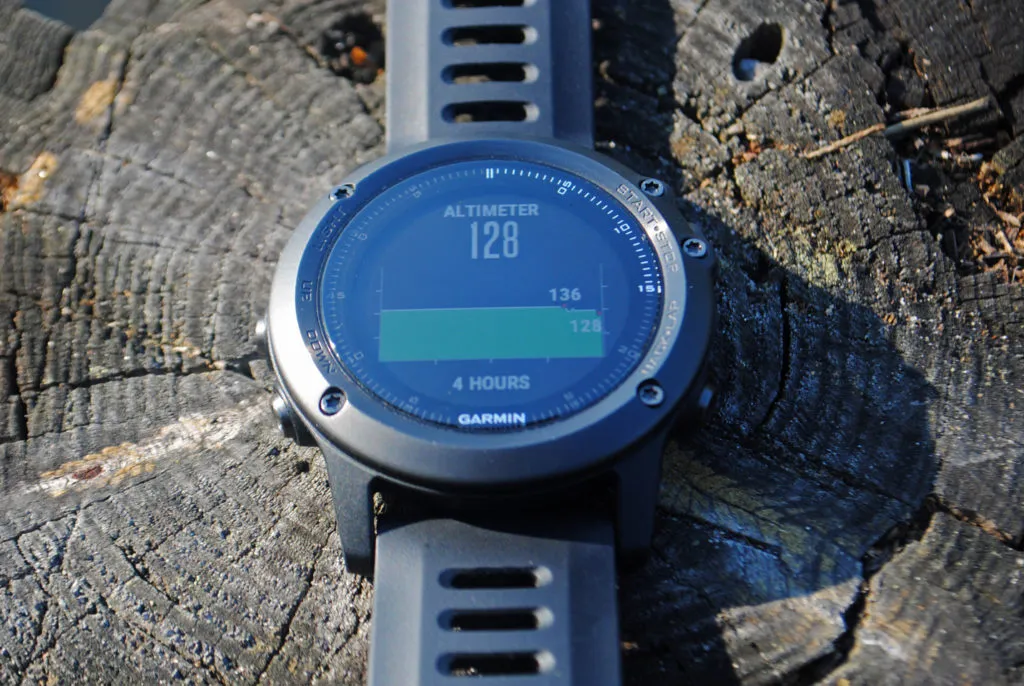
How accurate is the altimeter in a GPS watch?
 If you’re an outdoorsy person, you’d know there are quite a few sports like hiking, climbing, skiing, and skydiving, where knowing the altitude or the elevation of a place not only satisfies your inherent curiosity, it is, in fact, imperative for your safety.
If you’re an outdoorsy person, you’d know there are quite a few sports like hiking, climbing, skiing, and skydiving, where knowing the altitude or the elevation of a place not only satisfies your inherent curiosity, it is, in fact, imperative for your safety.
If you’re an outdoorsy person who likes these sports, chances are you own a GPS watch with a built-in altimeter – an instrument that measures your height above a fixed level, usually adjusted for the mean sea level.
If you’re an outdoorsy person who likes these sports and owns a GPS watch with a built-in altimeter, there has probably been a time when you’ve seen the device giving you some pretty erratic altitude data. Ever wondered why? To figure this out, you first need to understand how an altimeter watch works.
Traditional altimeter watches
Traditional altimeter watches use atmospheric pressure as a gauge to measure and track changes in the altitude – just like a barometer. The atmospheric pressure is greatest near the earth’s surface because gravity pulls everything, even air molecules, toward it. As you go up, the pressure starts to decrease, and the altimeter compares this new pressure to the previously-known sea level to determine your height.
But altitude is not the only factor that causes variations in pressure; weather changes do too (high temperature = pressure drop, and vice versa). So, to get an accurate reading, a traditional barometric altimeter watch would need to be calibrated almost on a daily basis to match the known reference height. This can easily be done using Google Earth: Just search for your exact location and note down the elevation mentioned at the bottom of the page.
GPS-based altimeter watches
On the other hand, an altimeter that uses the Global Positioning System to determine the altitude draws on the signals from GPS satellites (and sometimes GLONASS), pretty much in the same manner as positioning technology. While a GPS receiver needs to triangulate signals from three or more satellites to pinpoint its exact position, signals from at least four satellites are essential to calculate the elevation. And to achieve any kind of reasonable accuracy, at least one of these satellites need to be directly overhead the receiver.
Though this condition is not exactly hard to fulfill with 31 functional GPS satellites orbiting the Earth right now, discrepancies crop up because the speed at which radio waves travel gets affected by the variations in the density of the ionosphere. The general rule of the thumb is that vertical error is three times the horizontal error. If a decent signal reception is available, a modern GPS receiver should be able to give elevation data accurate to a range of 10 to 20 meters (35 to 70 feet) post correction.
And that’s exactly where the problem with GPS-based altimeter watches meant for the great outdoors lies. The GPS reception isn’t always terrific and hikers have reportedly found the altitude measurements to be off by as much as 400 feet!
Garmin confirms this, explaining that the main source of error has to do with the arrangement of the satellite configurations during fix determinations. “The earth blocks out satellites needed to get a good quality vertical measurement. Once the vertical datum is taken into account, the accuracy permitted by geometry considerations remains less than that of horizontal positions.” As such, the values provided by GPS-based altimeters should be used with caution when navigating.
So, while it’s obvious that both systems have their pros and cons, if you’re looking for an accurate elevation data (and a way to ensure you don’t get caught in a white-out storm), you would be better off if your GPS watch uses a barometric altimeter as a system of checks and balances.





